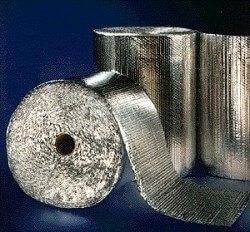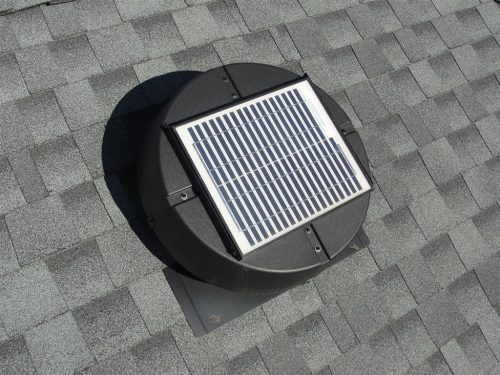I recently heard about an insulation contractor here in Minnesota who is selling what amounts to snake oil. Oh, and they’re charging a ton of money to do it. I’m going to bash a couple of products today, so I know I’ll get plenty of hate mail, but that’s ok. I don’t have a dog in the fight; I’m here to share the unbiased truth. My problems are with radiant barriers, attic fans, high-pressure sales tactics, and blind quotes.
Radiant Barriers
My first complaint about this company: they’re promoting radiant barriers in Minnesota homes. I first blogged about radiant barriers a decade ago when a concerned reader said his 85-year-old mother-in-law purchased a $2,500 radiant barrier insulation system for her 1,800-square-foot townhouse. The system was installed two days after she signed the contract. That alone ought to raise some eyebrows, but here’s the skinny on radiant barriers, also known as Multi-Layer Insulation (MLI).
Radiant barriers are essentially bubble wrap covered with foil on both sides.
The material is sold in rolls and is quite easy to install. The problem with this product is that it only works to prevent radiant heat transfer; it does nothing to prevent convective heat transfer, conductive heat transfer, or air leakage in attics. Can you guess how much heat is lost in Minnesota attics due to radiation? I’m no engineer, so I can’t give you any hard numbers… but I know the answer is very close to nothing. In other words, the value of a radiant barrier in a Minnesota attic is very close to nothing.
Around that same time, the Minnesota Department of Commerce issued a consumer alert about these types of insulation systems for Minnesota homes, saying the same thing. They’re a waste of money.
Oak Ridge National Laboratory has concluded that radiant barriers may give an average Minnesota home some savings in energy, somewhere around $10 – $40 per year, assuming the home has ductwork in the attic. The problem with applying this generous savings model to Minnesota homes is that most Minnesota homes don’t have ductwork in the attic. With no ductwork in the attic, the average annual savings would drop to about $5 per year.
Attic Fans
This company is also promoting attic fans for Minnesota homes, saying they’ll cool your house in the summer and keep your home warmer in the winter.
That’s a bunch of hogwash. First, let’s look at how they operate during the summer. You set the thermostat to have the fan kick on when it gets to a certain temperature in your attic, and the fan pulls air out of the attic. In a perfect world, this air would be replaced with outside air coming in through the soffit vents, which is surely cooler than the air in the attic. In reality, most attics have a lot of passageways for conditioned house air to be pulled into the attic. When that happens, the house needs replacement air, which it gets from the outdoors. When that happens, it makes your house warmer. Not cooler.
But even if you have a perfectly sealed attic lid and the air is only drawn in from the outdoors, how will this affect the inside of your house? It won’t! Not if your attic is properly insulated. And it also won’t increase the life of your shingles.
And as for the claim that this will keep your home warmer in the winter? That’s simply a bald-faced lie. These attic fans don’t run during the winter. And even if they did, they’d pull air out of the house into the attic, and that warm air would have to be replaced with cold outdoor air. If the attic was perfectly air sealed, the fan wouldn’t pull any air from the house into the attic; it would only pull in outdoor air. And what does that do? It makes the attic colder. Making the attic colder will not make your house warmer. You’re welcome.
And because I know that the topic of attic fans is the most controversial thing I’m talking about today, here are a few other links related to avoiding attic fans:
- Energy Vanguard: The #1 Reason Power Attic Ventilators Don’t Help
- Energy Vanguard: Is It Ever Helpful to Use a Powered Attic Ventilator?
- Advanced Energy: Are power attic ventilators smart to use?
- Optimal Building: The Dangers of Powered Attic Ventilators
- Energy Star: About Attic Ventilation
- Home Energy: Drawbacks of Powered Attic Ventilators
High-Pressure Sales Tactics
This company is offering free dinners where attendees need to make an appointment with a sales consultant the following day. They’re given a “special deal” that expires when the salesperson leaves, encouraging uneducated homeowners to make a bad decision on the spot. I don’t know of any reputable companies that employ shady sales tactics like this.
Blind Quotes
The icing on the cake is the fact that this company is providing outrageously high sales quotes without ever entering people’s attics. How can they have any idea of what is needed in an attic without looking at it?
If you know of anyone who is considering an attic insulation upgrade, tell them to steer clear of any free meals because there is no such thing. A good insulation contractor will focus on air sealing and insulation; ideally, they’ll also discuss combustion safety and indoor air quality.



Vickie Swenson
April 11, 2023, 12:36 pm
We saw one of these heat barriers in Owatonna last year. The homeowners had installed a whole house humidifier 2 years prior to the visit (another thing that can cause a lot of problems in attics). They maintained the temperature in the house at 80 degrees and the humidity at 80 percent. They enjoyed the tropical feel of the warmth and heat. Thankfully the steel roof salesman who came to check out their roof had mentioned that they had a problem in the attic. The barrier had trapped so much moisture in the insulation that there was standing water in the attic. They were at risk of having to remove the rafters, and sheathing. They did remove the barrier, insulation and all ceilings.
Reuben Saltzman
April 11, 2023, 3:11 pm
Yikes! That sounds like a nasty situation.